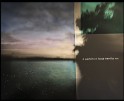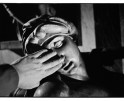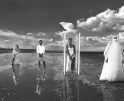Can We Afford Success, Revisited
“Almost all photographers have incurred large expenses in the pursuit of tiny audiences, finding that the wonder they’d hoped to share is something few want to receive.” — Robert Adams
It was over a decade ago, that I first wrote about the cost of being a fine art photographer. I think it’s time to revisit this subject as the photography world is changing and yet, still staying very much the same. This will be sort of a meandering essay as I unpack all my thoughts. I would like to open this conversation up to others, so if you have a story to tell or thoughts to pass on, please email me (I’m not hard to find), and we will continue this discussion.
To start, I think it’s important to define what success means to you. For most of us, it would be having exhibitions, being represented by a gallery, publishing a book, and making sales. Oh yes, and being acquired into museum collections. But, there needs to be an internal compass, a self-awareness that reminds you that just making the work is an accomplishment and truly the best part of the journey. The second best part is being part of a community of like minded people, photographers who encourage and support your efforts, photographers who trade work and ideas with you, and who make the journey so much richer. I’ve thought a lot about why I love photographers and I think it’s because we are active seers, looking at the world in a more profound way, stating “let me show you this”, whether it be a project about incarceration or unrest, retold or reassessed histories, the profound experience of family in all it’s forms, climate change, the beauty of the natural world, or simply looking at photographic materials in a whole new way. I feel very lucky to be part of a community that is looking hard at the world.
When I started out in photography, there were only a handful of places to submit work to, and many fewer photographers who were seeking out calls for entry. I would get a rejection or acceptance letter that would always start out with, “We had over 60 entries and….”. Today, make that 60 into 3,000 or more. The good news is that there are SO many more opportunities for getting your work out. With the challenged economy, galleries, photo centers, magazines, and even museums have created calls for entry. There are opportunities all over the world. Some opportunities have real value and others many not benefit anything besides your ego. I recommend doing research and consider how important it is to your career.
The other important component to all of these opportunities is the social media aspect. Years ago, before facebook and instagram, I would get work into printed magazines, like SHOTS, and receive a few postcards in the mail from strangers and friends congratulating my work. Those correspondences were the beginnings of building community and I still have a few of those postcards hanging above my desk. It was kind of magical to know that someone had made the effort to contact me. And, more importantly, I was not promoting or sharing anything. With the advent of social media, we now share all our successes, large and small, as a way to validate ourselves, to make ourselves known. I am uncomfortable with self promotion, and every time I hit “post” on Facebook, something inside of me cringes. Is social media feeding the need to succeed?
I started thinking more about the cost of being a fine art photographer earlier this year. I had work in a variety of venues and was showing significantly more work. But that means significantly more cost. I had three museum shows this year and everything needed elevation and perfection. And the shipping was important so that nothing arrived damaged. With another exhibition, I must admit, I didn’t consider the costs if I actually was accepted in to the show. All of a sudden, where I’d normally send one image, I was sending 6, and that was 6 times the framing and shipping costs. With many exhibitions, the work doesn’t sell and those six boxes come back to add to you ever growing collection of returned framed photos. When my book, Self & Others, came out in 2015, I had 7 solo shows, several at the same time, resulting in three crates of framed work sitting in the garage, plus closets filled with framed work, and an ever growing collection in my daughter’s bedroom. Where does that work go?
This brings me to my final revelations.
#1 The next generation, saddled with student debt and untethered from their institutions (no longer having access to studios, printers, and mentors,etc.) cannot participate in portfolio reviews and calls for entry as the costs are prohibitive. I have learned a lot from my Student Prize winners, how hard it is to leave a stimulating and supportive environment and move forward in any realm of the photography world. The next generation needs support.
#2 I serve on several non-profit boards so I am keenly aware of the state of photography. Photography Centers are the backbone of this community–they provide opportunities, workshops, community, and inspiration and the Executive Directors work tirelessly to provide all of that. Unfortunately, many photographers assume that these institutions are flush with funding, but the truth is that if you want photo centers to stay in existence, they too need to be supported.
#3 Too much cost is on the backs of the photographers. A few museums and photo centers will help with shipping and sometimes, though rare, will provide a stipend. Most require the artist to pay for shipping both ways, pay for framing, and work to promote the exhibition. If you want to attend the opening, that is on your dime.
So unfortunately, we are back to where we started 10 years ago. Not a lot of solutions, but perhaps we can work to change it through our shared experiences. I wanted to open the conversation.
“Whether you succeed or not is irrelevant, there is no such thing. Making your unknown known is the important thing–and keeping the unknown always beyond you.” – Georgia O’Keeffe
Posts on Lenscratch may not be reproduced without the permission of the Lenscratch staff and the photographer.
Recommended
-
2023 in the Rear View MirrorDecember 31st, 2023
-
The 2023 Lenscratch Staff Favorite ThingsDecember 30th, 2023
-
Inner Vision: Photography by Blind Artists: The Heart of Photography by Douglas McCullohDecember 17th, 2023
-
Black Women Photographers : Community At The CoreNovember 16th, 2023




















































